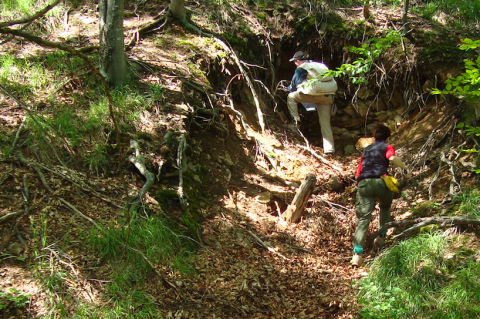MSc Dissertation Placement – Week 2 – Developing a work plan

The second week started with a field trip to the Srednji Sturač mountain (meaning middle Sturač) to investigate sites of historic mining (so called ‘pinges’). The survey of these former mining sites is a common approach for exploration, but they are also important for underground development, as voids from old adits could pose geotechnical risks. The historic mining at Rudnik has been ongoing since Roman times. The Saxons and the Austro Hungarians also were very actively mining here. Because the mining of the historic sites was most often discontinued because of technological limitations, the exploration of old mine workings often results in a new mineral reserve for the mine. The miners at Rudnik are of course using modern mining and processing technology which is more efficient and makes the mining at historic sites historic sites economically viable again. Based on the large size of the mining license and the fact that historic workings are found in large parts of it, underlines that mining potential of the region. On the following days I was carrying out a desk study to finalise my work plan and the use of methods for the development of my dissertation. I am very grateful for the support of the team, which will be crucial for a successful MSc thesis. A precise scheduling of the work is not always possible as factors in mining are somewhat variable, but the coordination of my requirements with the rest of the team are necessary to comply with the safety standards of the mine and the work schedule of the team. I was able to spend the weekend in the capital, Belgrade with my partner to absorb some of the local culture and see the breath-taking historical sites, because no visit to Serbia is complete without it. With most of the work planning now in place, I am looking forward to the weeks of mapping, sampling and computer modelling to come. Richard Roethe



